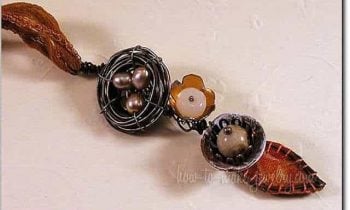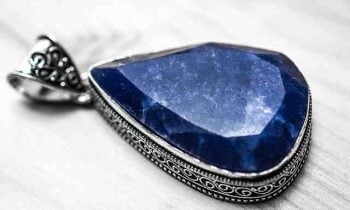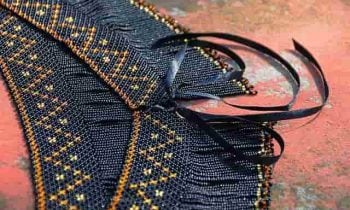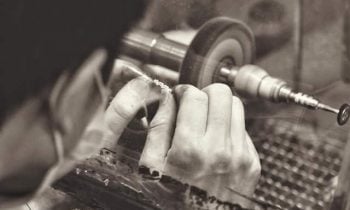As you go on your jewelry making journey, you’ll find that you will often encounter wires. Jewelry makers, the creative lot, have found many ways to incorporate them in pieces in various ways.
Master the art of dealing with wires with this simple tutorial. Follow these steps and learn how to make a basic wire chain necklace. This will also be great for training you to make uniformly sized wire loops which will surely be useful as you move onto more difficult projects.
For this project, you’ll need the following materials: 18 or 20 gauge wires, round nose pliers, wire cutters and a jaw nose plier.
Process:
Step #1
Form a small loop by stretching your wire with jaw nose pliers. If you don’t have jaw nose pliers, you can use a piece of cloth or your fingers.
Step #2
Form a second loop by placing the tip of the wire’s other side into the midsection of your round nose pliers and rolling the wire towards you. The loop you’ll end up with will be be larger this time.
There is an alternative way of doing this if you don’t have round nose pliers. You can wrap the other side of the wire on a pen or a manderel to make the loops. This method will result in larger loops.
Step #3
Form more loops. And determine the desired length of your necklace. You can stop making loops once you reach this length.
Step #4
Hammer your formed loops on a steel block. You can also use a Beadsmith Whacker. Be careful to not hit your fingers when doing this step!
Step #5
Make the final loop by putting the large hammered loop in the midsection of your round nose pliers and twist the small loop using your fingers.
There you go! You should have many loops by now. You can make them colorful by using different colored wires. These loops can even be formed to make some clasps. Store extra loops in a box in case you’ll need them in the future.
Before we end, here are some more tips to know when working with wires.
First, invest in good quality wire cutters to make wrapping loops easier on your hands. The correct pliers (round nose, chain or flat nose) will also make your work go faster and easier as well. Next, you should know which wire diameters work best for certain tasks. Use 20 gauge wire to make ear wires as 18 gauge wires might be too large while 22 gauge wires tend to not hold onto shape. You can use 18 to 24 gauge wire to make head pins. Another tip to make your work easier is to segregate and properly organize your wires by size, wire types and even color. You might not be able to tell an 18 from 24 quickly enough when working. Besides, organizing will save you from headaches and prevent from wasting your time.
Master this skill by constant practice. You’ll find that in no time, you’ll be able to make uniformly sized loops for your wire chain necklaces. The skill to repeatedly reproduce similar looking pieces is a great skill to have as it will set your work apart from those of amateur jewelry makers.

 Common jewelry making mistakes beginners make and how to avoid them
Common jewelry making mistakes beginners make and how to avoid them DIY Birthstone Jewelry
DIY Birthstone Jewelry 5 must learn basic beading stitches for beginners
5 must learn basic beading stitches for beginners 6 essential tools you’ll need as a jewelry-making beginner
6 essential tools you’ll need as a jewelry-making beginner